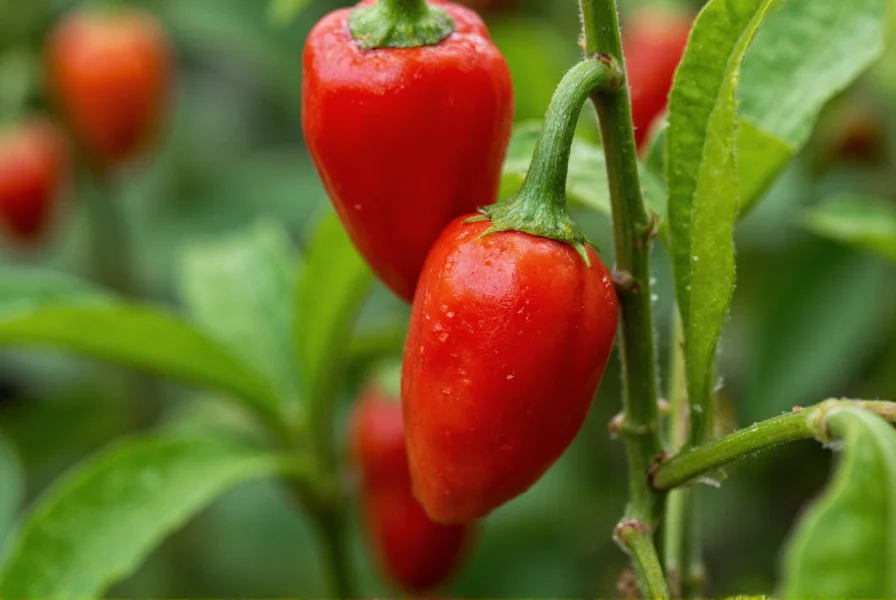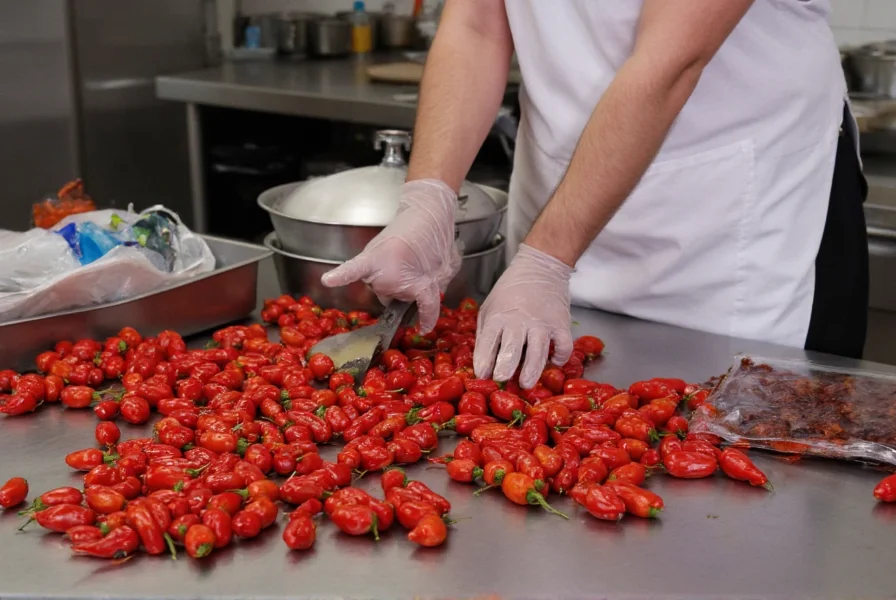The Bhut Jolokia, commonly known as the ghost pepper, transforms significantly when allowed to fully ripen to its characteristic red color. This maturation process isn't merely cosmetic—it fundamentally alters the pepper's chemical composition, flavor profile, and heat distribution. Understanding these differences is crucial for both culinary enthusiasts and home gardeners seeking to maximize their pepper-growing experience.
Understanding Red Ghost Pepper Characteristics
When ghost peppers reach full maturity and turn from green to vibrant red, they undergo several important changes. The capsaicin concentration—the compound responsible for heat—becomes more evenly distributed throughout the fruit rather than concentrated in the placental tissue. This creates a more consistent, albeit still extremely intense, heat experience.
Red ghost peppers typically measure between 800,000 and 1,041,427 Scoville Heat Units (SHU), placing them among the world's hottest chilies. For context, this makes them approximately 200-400 times hotter than a standard jalapeño pepper. The red variety often develops subtle fruitier notes compared to their green counterparts, with hints of apricot and smokiness that balance the intense heat.
| Characteristic | Red Ghost Pepper | Green Ghost Pepper |
|---|---|---|
| Maturity Stage | Full maturity (120-150 days) | Immature (90-120 days) |
| Heat Level (SHU) | 800,000-1,041,427 | 855,000-1,041,427 |
| Flavor Profile | Fruity, sweet, smoky | Grassy, vegetal |
| Shelf Life | 2-3 weeks refrigerated | 1-2 weeks refrigerated |
| Best Culinary Uses | Sauces, dried powders, infused oils | Fresh salsas, immediate processing |
Growing Red Ghost Peppers Successfully
Cultivating red ghost peppers requires specific growing conditions that many home gardeners overlook when attempting to grow extremely hot chili varieties for maximum yield. These peppers originate from the northeastern regions of India where humidity levels exceed 70% and temperatures remain consistently warm.
For optimal red ghost pepper development, maintain soil temperatures between 80-90°F (27-32°C) during germination. The plants require 120-150 days to reach full maturity and develop their characteristic red color. Many growers make the mistake of harvesting ghost peppers too early, missing the opportunity to experience the flavor complexity of fully ripened red ghost peppers.
When growing red ghost peppers, proper watering technique significantly impacts final quality. Maintain consistent moisture without waterlogging—approximately 1-2 inches of water per week. As harvest approaches, slightly reducing water can increase capsaicin concentration, though this technique requires careful monitoring to avoid plant stress.

Culinary Applications and Safety Considerations
The unique flavor profile of red ghost peppers makes them particularly valuable for creating balanced hot sauces with complex flavor notes. Unlike their green counterparts, the red variety's developed sweetness allows for more nuanced recipes where the heat complements rather than dominates.
When working with red ghost peppers, proper safety protocols are non-negotiable. Always wear nitrile gloves when handling, avoid touching your face, and work in well-ventilated areas. The capsaicin in ghost peppers can become airborne when cutting, causing respiratory irritation. Never use plastic gloves—capsaicin can penetrate them—and always wash hands thoroughly with soapy water after handling, even when wearing gloves.
For those exploring how to incorporate red ghost peppers into everyday cooking safely, start with minuscule amounts. A single drop of infused oil or 1/16th of a pepper often provides sufficient heat for an entire dish. Remember that cooking doesn't eliminate capsaicin—it merely distributes it more evenly throughout your recipe.
Storage and Preservation Techniques
Preserving the intense flavor of red ghost peppers requires specific techniques that maintain their unique properties. Drying red ghost peppers whole in a food dehydrator at 125°F (52°C) for 8-12 hours creates excellent material for grinding into powder. Alternatively, freezing whole peppers preserves their fresh characteristics for up to one year.
For those interested in long-term storage solutions for extremely hot peppers, consider creating infused oils or vinegars. These not only preserve the peppers but also provide convenient, measured ways to incorporate their heat into dishes. Always label preserved ghost pepper products clearly and store them away from children.

Where to Source Authentic Red Ghost Peppers
Finding genuine red ghost peppers can be challenging due to widespread mislabeling in the spice market. When searching for where to buy authentic red ghost peppers online, look for suppliers who provide Scoville testing documentation. Reputable vendors often sell them under their botanical name Capsicum chinense 'Bhut Jolokia' to avoid confusion with imposter varieties.
Farmers markets during late summer and early fall represent the best opportunity to purchase fresh red ghost peppers locally. When evaluating potential sources, ask about growing conditions and harvest timing—peppers harvested at true maturity will have the characteristic deep red color and slightly wrinkled skin that indicates full development.
Conclusion
Red ghost peppers represent the pinnacle of Bhut Jolokia development, offering a more complex flavor experience while maintaining their legendary heat. Understanding the differences between red and green varieties, proper handling techniques, and optimal usage methods allows culinary enthusiasts to safely explore these extraordinary peppers. Whether you're a home gardener, chef, or spice enthusiast, incorporating red ghost peppers into your repertoire requires respect for their power but rewards with unparalleled flavor dimensions.
How much hotter are red ghost peppers compared to regular ghost peppers?
Red ghost peppers and green ghost peppers come from the same plant variety and have nearly identical heat levels (800,000-1,041,427 SHU). The primary difference is flavor profile rather than heat intensity, with red peppers developing more fruity notes as they mature.
What's the best way to handle red ghost peppers safely?
Always wear nitrile gloves (not latex) when handling red ghost peppers, work in a well-ventilated area, and avoid touching your face. Never use plastic gloves as capsaicin can penetrate them. After handling, wash hands thoroughly with soapy water, not just sanitizer.
Can you eat red ghost peppers raw?
Yes, but extreme caution is required. Consuming raw red ghost peppers can cause severe mouth and stomach irritation. Most culinary applications involve processing them into sauces, powders, or infused oils to better control the heat distribution in dishes.
How long does it take for ghost peppers to turn red?
Ghost peppers typically take 120-150 days from planting to reach full red maturity. The color change from green to red happens during the final 2-3 weeks of development when the peppers are left on the plant to fully ripen.
What makes red ghost peppers different from regular ghost peppers?
The primary difference is maturity level. Red ghost peppers are fully ripened versions that develop more complex flavor notes (fruity, smoky) while maintaining similar heat levels. Green ghost peppers are harvested earlier and have more vegetal, grassy flavors with slightly more concentrated heat in the placenta.











 浙公网安备
33010002000092号
浙公网安备
33010002000092号 浙B2-20120091-4
浙B2-20120091-4